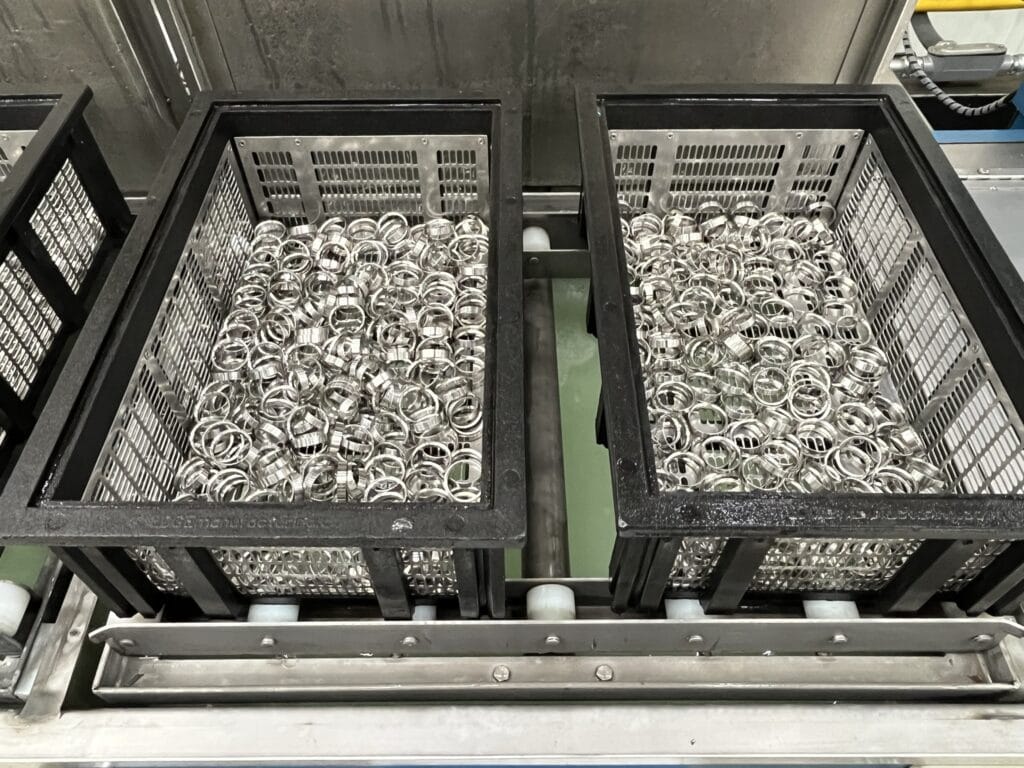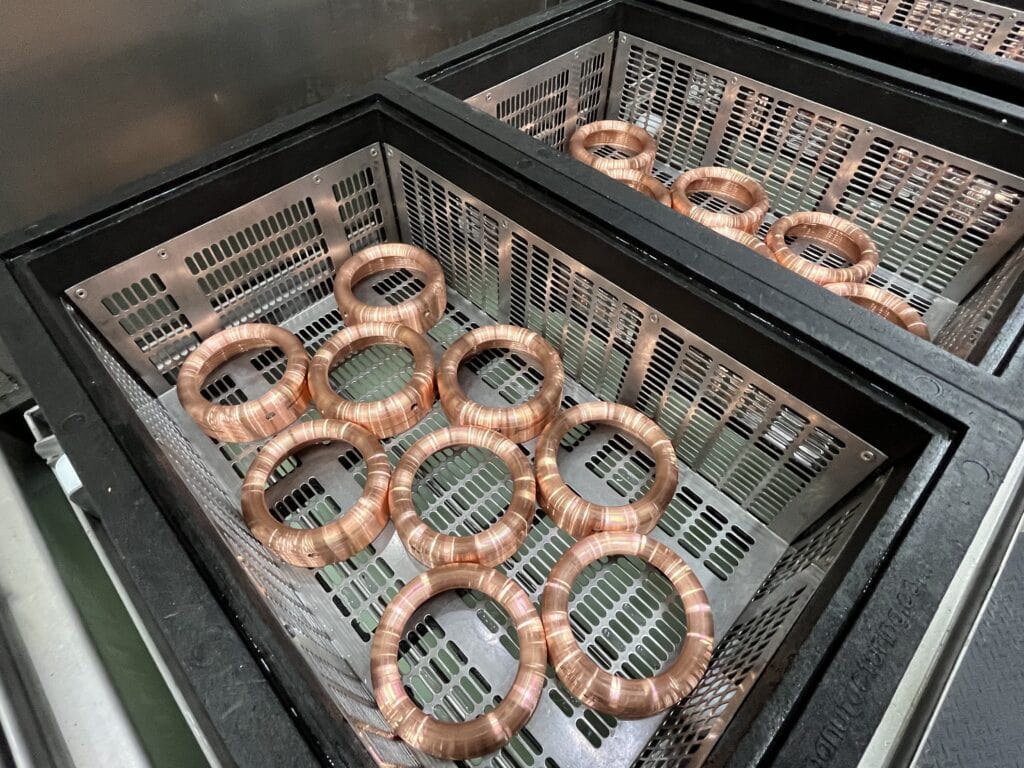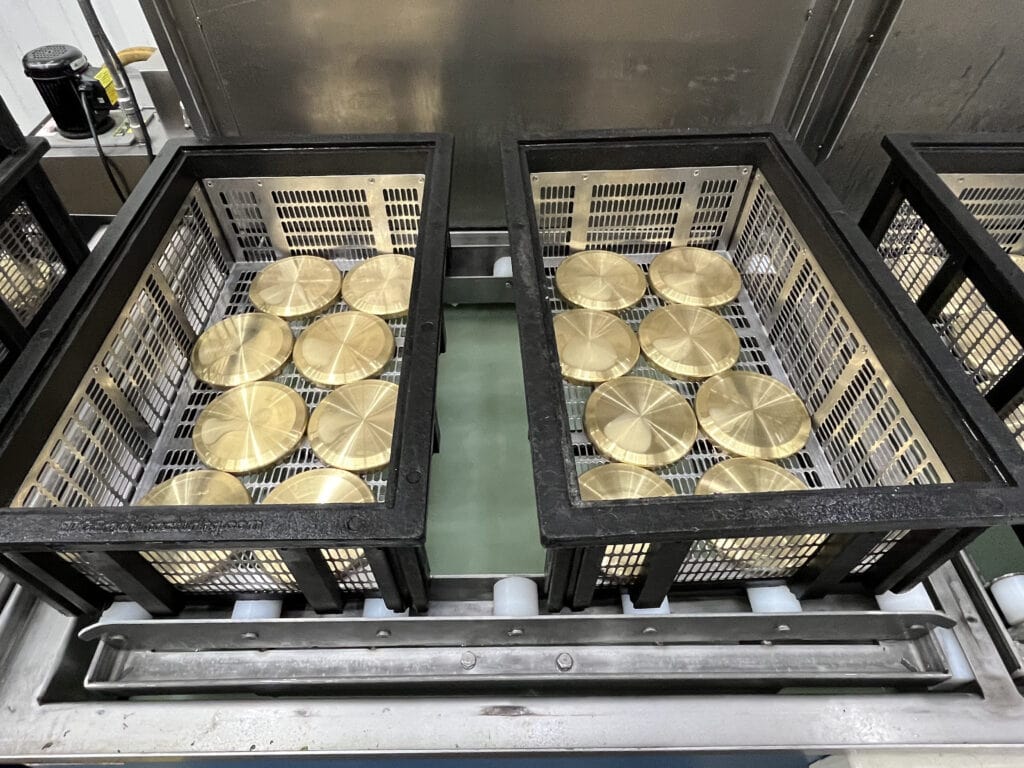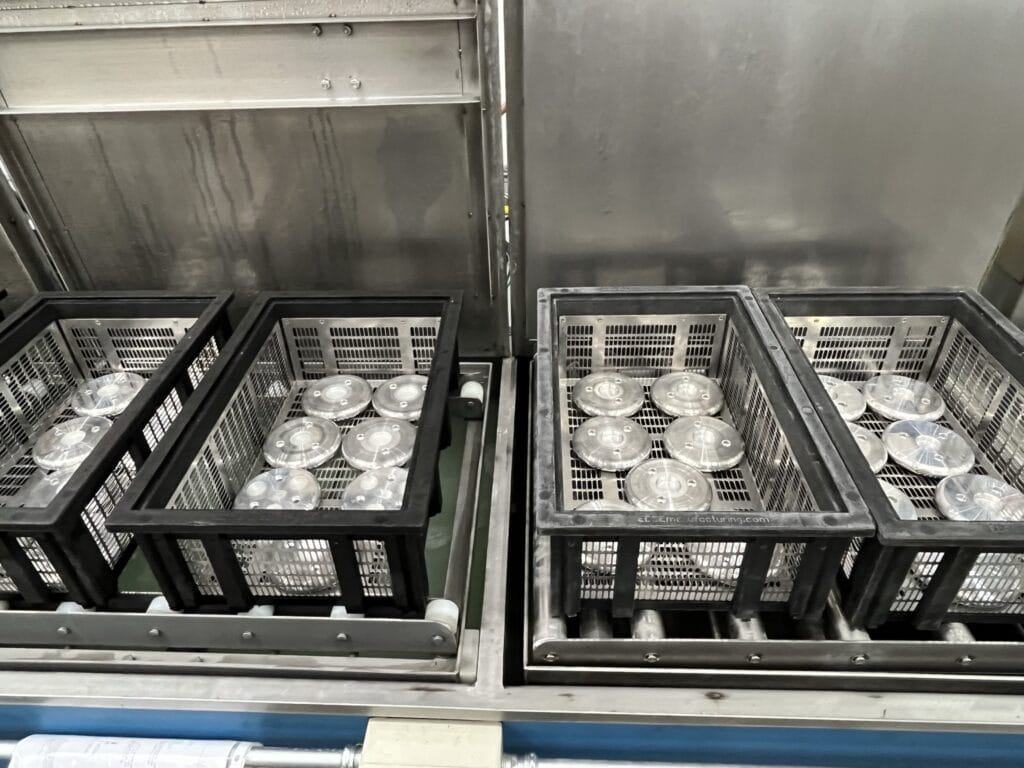Manufacturing precision machined parts requires a high-level view of the total machining process, from raw materials to finished, ready-to-ship products. Only then can you refine each step for maximum efficiency. While making the parts are often what most people think of, adequate cleaning can often be just as significant a challenge. The secret to cleaning machined parts quickly and effectively is selecting the right cleaning equipment and process most compatible with the parts’ shape and materials.
Why Cleaning CNC Machined Parts is Important
Cleaning machined parts of dust, chips, swarf, oil, abrasives, and any other contaminants is necessary to ensure effective assembly and longer product lifecycles. Practically every part ejected from a turning or machining center is coated with the residue of aqueous- or oil-based cutting fluids, and some degree of swarf. These residues and particulates can interfere with the next step of assembly, tarnish or corrode the part, and harm customer relationships.
Considerations for Cleaning Precision Machined Parts
Preparing parts for each stage of manufacturing is best accomplished by selecting the right cleaning equipment, which requires matching the parts’ physical and material properties with an appropriate machine cleaning method, including the chemicals used.
Water-Based or Solvent-Based Chemicals
Cleaning machined parts can be done with water-based or solvent-based solutions, and there are many options specially formulated for different materials. Removing basic particulates often requires a water-based detergent. Its pH must be suitable for the material’s chemical properties because high-alkaline substances can etch or discolor soft metals. Hard metals often require higher pH detergents, especially for removing non-oil coolant residue.
In situations where parts have been machined in oil-based coolants, possess intricate geometry, or consist of metals incompatible with aqueous solutions, the use of solvent-based chemicals becomes essential for achieving thorough cleaning.
Physical Properties of Parts
Cleaning efficiency also depends on matching the cleaning method with the part’s size, weight, and form. Some parts require special consideration, especially anything large and heavy, or parts with acute angles, occluded surfaces, and blind holes. These challenges require industrial cleaning devices made for equally specialized cleaning processes.
Immersion Washing Methods
Standard vapor or solvent degreasing typically involves little more than dipping parts into abrasive chemicals. Detergent cleaning is another option, which uses a washing process involving only mild chemicals. This process depends on the parts-washing system’s performance and flexibility.
Precision parts cleaning especially requires a consistent solution quality, achieved by mechanical agitation. Different agitation methods condition detergent and hasten the removal of chemicals and debris. The part’s material properties and form factor most significantly affect which of the following agitation processes will be most efficient:
- Platform Oscillation: A platform and water motion move the part through the solution, as oscillations simultaneously remove soap and emulsion from the part’s surface while delivering fresh solvent. Parts often rotate or otherwise move in and out of the solution, further dispersing and rinsing contaminants. Platform oscillation is the most frequently used way to clean irregular-shaped parts.
- Solution Turbulation: A system of high-velocity jets or eductors spray fully submerged parts while accelerating solvent agitation. This also creates a turbulent flow of the cleaning chemical, changing flow patterns and removing contaminants by a shearing action. Turbulation is very effective for parts with recessed or obscured areas.
- Cavitation: Ultrasonic frequencies create a microscopic scrubbing action, heightening agitation at an extremely granular level. Cavitation is often used in conjunction with other methods, and it’s most suitable for precision parts cleaning or much harder-to-remove chemicals.
Selecting the most efficient agitation method requires considering which cleaning process will be most thorough for a given part’s shape and other properties. The underlying goal is to minimize cycle times while maximizing cleaning effectiveness, all without damaging the part.
Contact Hogge Precision Parts
Our team takes the need for clean, residue-free machining and cleaning processes seriously. Cleaning precision machined parts is essential for improving your overall manufacturing efficiency.
Our team understands your need for precision machined parts that are ready for your next step in the manufacturing and assembly process. Contact us today to discuss all your parts cleaning needs, or submit your drawing and request a quote.





Comments are closed